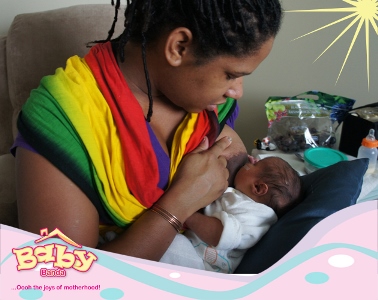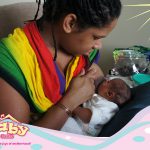Babies with a cleft lip can usually breastfeed. Placing the baby in an upright position with the cleft covered by the mother’s finger or breast tissue can aid attachment and reduce air intake. The secret is to create a seal where no air passes through. It just takes experimenting with a few positions and some are shown below. These positions help the milk from leaking from the nose and the dancer hold helps support the baby’s chin.
|
|

Dancer Hold Position |
Benefits of breastfeeding a baby with Cleft Lip
- Breastfeeding helps strengthen the face and mouth muscles, leading to a more normal facial formation. This promotes better speech skills as the baby grows.
- The breast is more flexible than a bottle nipple and moulds itself to the shape of the lip and mouth. A breast offers a baby more control over positioning and milk flow.
Challenges - Trouble maintaining a good seal.
- Gagging and choking.
- Milk leaking out of the nose.
- May prefer the side without the cleft.
- May tire more easily and not nurse long enough to get the hindmilk, which has the most calories.
- Weak suck.
- Non-rhythmic suck.
- Swallowing too much air.
What to do
- Breastfeed whenever you can but supplement with expressed breast milk so that the baby can get enough milk.
- Ensure you express your breast milk after every feed to stimulate supply as your baby’s suckle reflex might not be enough to sustain it. This will also ensure that you have enough milk for your baby.
- You can get specially designed bottle systems, nipples and flow valves to aid in feeding the baby.
- Burp your baby frequently during feeds as they tend to take in a lot of air as they try to suck or suckle.
Feeding a baby with Cleft Lip and Palate
These babies have difficulty with attachment and sucking and need to be fed with a squeeze bottle, a scoop or a spoon. You can also use a “squeeze” bottle, cup or spoon. The hole in the teat can be enlarged so that milk can be “pushed” out onto the tongue.




 Modified Football hold
Modified Football hold








